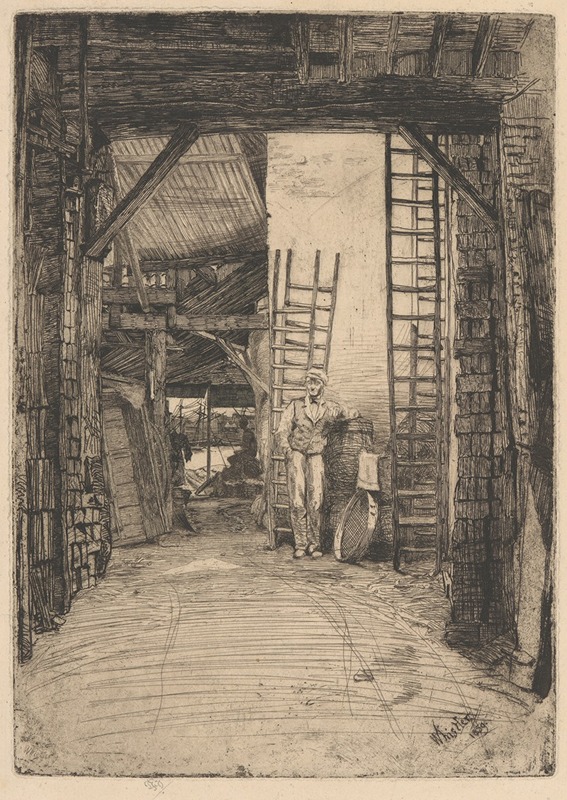
The Lime Burner
A hand-painted replica of James Abbott McNeill Whistler’s masterpiece The Lime Burner, meticulously crafted by professional artists to capture the true essence of the original. Each piece is created with museum-quality canvas and rare mineral pigments, carefully painted by experienced artists with delicate brushstrokes and rich, layered colors to perfectly recreate the texture of the original artwork. Unlike machine-printed reproductions, this hand-painted version brings the painting to life, infused with the artist’s emotions and skill in every stroke. Whether for personal collection or home decoration, it instantly elevates the artistic atmosphere of any space.
"The Lime Burner" is a painting by the American-born artist James Abbott McNeill Whistler, created in 1859. Whistler, who spent much of his career in Europe, is renowned for his innovative contributions to the art world, particularly in the realms of tonal harmony and composition. This painting is part of Whistler's series known as the "Thames Set," which consists of a collection of etchings that capture the life and atmosphere along the River Thames in London.
"The Lime Burner" depicts a scene from the industrial areas along the Thames, focusing on a lime kiln and its surroundings. Lime burning was an essential industry during the 19th century, as lime was a critical component in construction and agriculture. Whistler's choice to portray this subject reflects his interest in the everyday lives of working-class individuals and the industrial landscape of London, which was undergoing significant transformation during this period.
In this work, Whistler employs his characteristic etching technique, which is notable for its precision and attention to detail. The composition is carefully structured, with a strong emphasis on line and form. Whistler's use of light and shadow adds depth to the scene, highlighting the textures of the kiln and the surrounding environment. The artist's ability to capture the gritty reality of industrial life while maintaining an aesthetic quality is a testament to his skill and vision.
Whistler's "Thames Set" was instrumental in establishing his reputation as a leading figure in the etching revival of the 19th century. His work in this series demonstrates a keen observation of urban life and an ability to convey the atmosphere of the locations he depicted. "The Lime Burner," like other works in the series, reflects Whistler's interest in the interplay between man-made structures and natural elements, a theme that recurs throughout his oeuvre.
The painting is also significant for its contribution to the development of Whistler's artistic philosophy, which he later articulated in his "Ten O'Clock Lecture." In this lecture, Whistler emphasized the importance of art for art's sake, advocating for the aesthetic value of art independent of moral or narrative content. "The Lime Burner," with its focus on form, composition, and tonal harmony, exemplifies these principles.
Today, "The Lime Burner" is recognized as an important work within Whistler's early career, showcasing his technical prowess and his ability to capture the essence of the industrial age. It remains a valuable piece for understanding the evolution of Whistler's style and his impact on the art world. The painting is held in various collections and continues to be studied and appreciated for its historical and artistic significance.


















